Discovering the Wonders of Black Light in Rocks
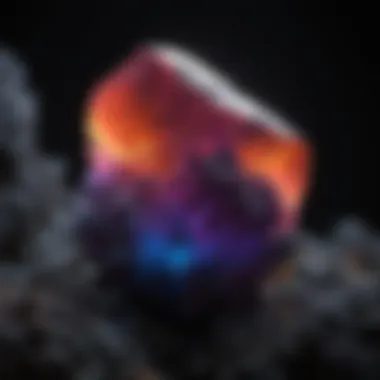
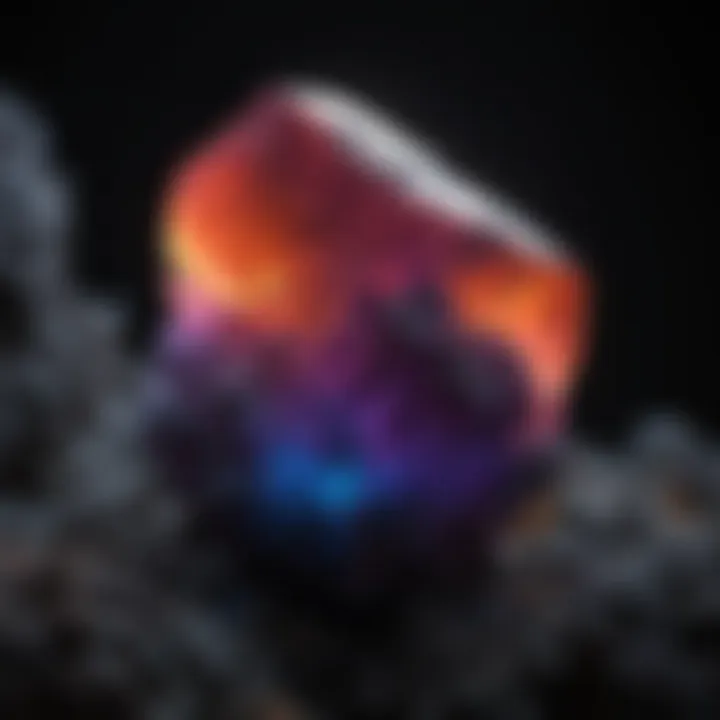
Intro
The world of gemstones and minerals is a treasure trove of stunning visuals and intricate details. However, many of these features remain hidden from the naked eye, often locked away in darkness. This is where black light, or ultraviolet light, steps in like an artist revealing a masterpiece beneath a layer of dust. By illuminating rocks and gemstones with this unique form of light, collectors, gemologists, and enthusiasts can uncover fascinating luminescent qualities that enhance their understanding and appreciation of these natural wonders.
In the upcoming sections, we will take a closer look at the properties of various gemstones. We'll explore how black light affects illumination in minerals, delve into the historical significance of these rocks, and share valuable insights for collectors and designers alike. Buckle up, as we embark on this enlightening journey!
Gemstone Overview
Definition and Characteristics
Gemstones are naturally occurring minerals that are often cut and polished to enhance their visual appeal. They possess unique characteristics that contribute to their value and desirability, including:
- Color: The hue of a gemstone is possibly the most striking feature, varying widely from the rich greens of emeralds to the vibrant blues of sapphires.
- Clarity: This refers to the presence of inclusions or blemishes within the stone, with higher clarity often leading to increased value.
- Cut: A well-cut gemstone reflects light beautifully, enhancing its brilliance and creating a captivating display.
- Carat Weight: This refers to the size of the gemstone. Larger stones tend to be rarer and thus more valuable.
Classification of Gemstones
Gemstones can be classified into two main categories: precious and semi-precious. Valuable stones like diamonds, rubies, and sapphires fall under the precious category. On the other hand, semi-precious stones, such as amethyst and topaz, are abundant and often more accessible.
"The classification of gemstones influences both their market value and the aesthetic appeal they hold for collectors and enthusiasts alike."
Historical Significance
Ancient Uses and Cultural Importance
From the ancient Egyptians who adorned their royal tombs with lapis lazuli to the rich traditions involving jade in Chinese culture, gemstones have held significant value throughout history. People believed these stones possessed magical properties, offering protection or health benefits. For example, turquoise was regarded as a shield against evil spirits, while garnet was believed to provide safety during travel.
Myths and Legends Surrounding Gemstones
Many cultures crafted legends around gemstones. The ancients told stories where gemstones played vital roles, from being used as talismans in battle to representing purity or love in婚姻. These myths contributed to the allure of gemstones and established their ongoing symbolic importance in today's society.
Prologue to Black Light
Black light, or ultraviolet (UV) light, is an intriguing tool in understanding the secrets of geological phenomena. Its ability to highlight details not visible to the naked eye makes it essential for anyone exploring the realms of rocks and gemstones. Black light creates a unique environment tailored for mineral enthusiasts. Using this kind of light can vastly change the way we appreciate these natural wonders, adding new layers of depth to their beauty.
At its core, black light serves as a bridge connecting scientific study with the hands-on engagement of rock collecting and appreciation. With a simple setup—often just a UV bulb—collectors can enter a world that feels almost magical. It's like turning a key that unlocks a hidden chamber of marvels, revealing vibrant colors and patterns across various natural stone forms. This experience is not just for enjoyment; it also offers a practical angle. Understanding how minerals respond to black light is valuable for identification purposes and can help gauge the quality of a specimen.
The relevance of black light also extends into the world of gemology, where gemologists often rely on this technology to assess authenticity and treatments. For collectors, this knowledge can mean the difference between an ordinary rock and a dazzling gem deserving a spot in their showcases.
Key Points About Black Light's Significance
- Facilitates the identification of fluorescent minerals.
- Aids in detecting potential treatments or enhancements.
- Enriches the appreciation of natural formations.
- Bridges the gap between science and art.
By planting our feet firmly in the realm of black light, we can begin to peel back the layers of knowledge about not only how light interacts with minerals but also why it matters to those passionate about geology and gemology.
Understanding Fluorescence
Fluorescence plays a vital role in the intersection of black light and rocks. When discussing minerals and gemstones, it becomes essential to understand this phenomenon, as it reveals characteristics that are hidden from the naked eye under normal illumination. By grasping the principles of fluorescence, enthusiasts can appreciate the intricate beauty of their collections as they interact with black light. This knowledge is not only beneficial for collectors but also for jewelers, geologists, and anyone intrigued by the natural world.
What is Fluorescence?
Fluorescence occurs when a substance absorbs light or other electromagnetic radiation and then re-emits it almost instantly. In simple terms, a material is said to be fluorescent if it lights up when exposed to certain types of light, particularly ultraviolet (UV) light, commonly known as black light. When the excitation ceases, the material stops glowing. This plays an interesting role in how we view and collect minerals. For collectors, identifying fluorescent minerals can often enhance the experience, making each specimen more captivating.
Mechanisms Behind Fluorescence in Minerals
Now, let’s dig into the mechanisms at play. At the atomic level, fluorescence in minerals is driven by electrons absorbing energy. When exposed to black light, some minerals’ electrons jump to higher energy levels. As these excited electrons return to their ground state, they release energy in the form of visible light. This process can vary significantly among different minerals due to their unique chemical compositions and structures, making some fluorescent while others are not. For instance, minerals like calcite or fluorescence-friendly fluorite exhibit vibrant hues under black light, showcasing nature's unique artistry.
Fluorescence Spectrum and Black Light Interaction
The interaction between black light and fluorescence isn't just a simple matter of on and off. A range of colors can be produced depending on the type of mineral and its specific fluorescence spectrum. When rocks and gems are subjected to UV light, the energy emitted can fall across a spectrum that includes red, blue, green, or even yellow light. Each mineral's spectrum provides insights into its specific properties and characteristics, allowing for enhanced identification and appreciation. Collectors can leverage this information to make informed decisions when curating their collections, as not all minerals will display the same reaction under black light.
In summary, understanding fluorescence offers a window into the unseen world of minerals, revealing colors and patterns that stand hidden until illuminated by the right light. This knowledge not only enhances the hobby of rock collecting but also deepens appreciation for the complex forces at play in geology and gemology.
Phosphorescence vs. Fluorescence
In the world of gemstones and minerals, the terms phosphorescence and fluorescence often swirl around like autumn leaves in the wind. While they might seem interchangeable to the casual observer, understanding their distinctions is both vital and intriguing for collectors, jewelers, and geology enthusiasts alike. Each phenomenon presents unique characteristics that enhance the appreciation and evaluation of mineral specimens under black light. So, let’s break down the key features and implications of these phenomena as they relate to rocks and gemstones.
Distinguishing Features
The first thing to understand is how these two effects differ fundamentally. Fluorescence occurs when a mineral absorbs ultraviolet light and then re-emits it almost instantaneously, typically within a fraction of a second. This results in the mineral glowing as long as it is exposed to the black light source. On the other hand, phosphorescence involves a delayed release of light. Once the black light is turned off, phosphorescent minerals may continue to emit a glow for several seconds, minutes, or even hours, depending on their specific properties.
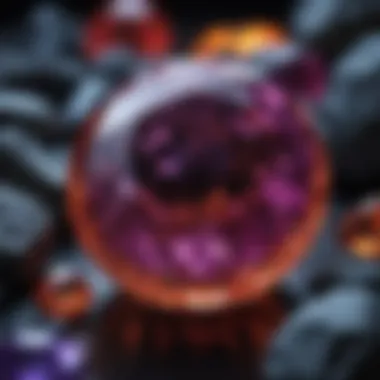
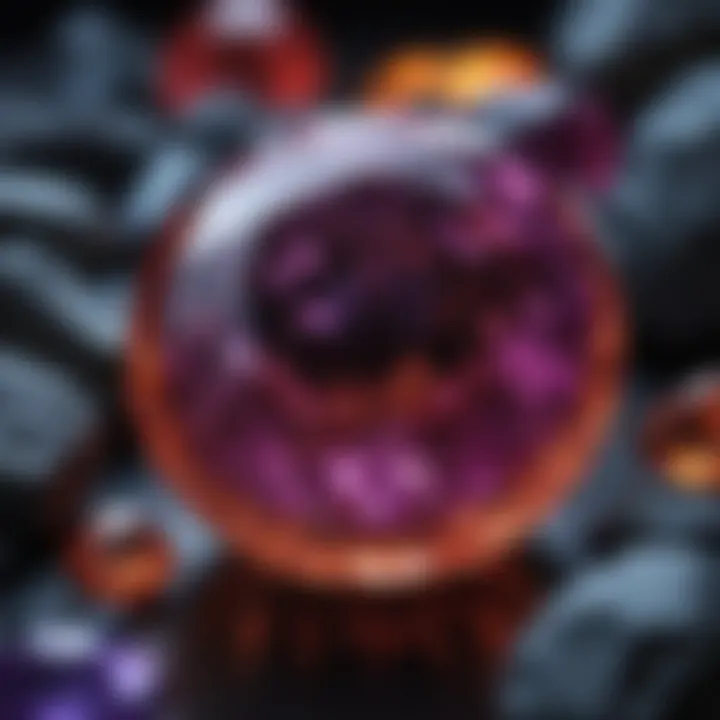
For instance, a mineral like calcite can fluoresce to a bright orange under UV light but will stop glowing almost immediately after the light source is removed. Conversely, strontium aluminate, which exhibits phosphorescence, may take in energy from the light and release it over a much longer period, producing a lingering, soft glow in the dark.
- Fluorescence
- Phosphorescence
- Immediate light emission.
- Stops glowing when the light source is removed.
- Common examples include fluorite and scheelite.
- Delayed light emission.
- Continues to glow after the light source is removed.
- Examples include zinc sulfide and cadmium sulfide.
This understanding can significantly impact how collectors and gemologists evaluate specimens. For instance, when examining a rock under black light, recognizing which minerals exhibit fluorescence versus phosphorescence can lead to more informed buying decisions and enhance display choices.
Duration of Glow
Now, let's talk about the duration of the glow, a key element that sets these two apart. The difference is more than a mere trivia fact; it holds practical importance for collectors and gem enthusiasts who display their specimens.
- Fluorescent minerals, as noted, will shine brightly as long as the UV source is active. However, once that source is gone, the show is over. This characteristic can limit their impact unless strategically displayed under continuous UV or black light. It presents a challenge for showcasing rocks in natural lighting without compromising their potential.
- Phosphorescent minerals, however, really steal the spotlight in this regard. The extended glow means rocks can be enjoyed even after the black light has been turned off. This feature becomes crucial for exhibitions or personal collections, allowing for an engaging experience where visitors can relish the afterglow without needing a constant UV source.
Recognizing these differences can help collectors decide how best to display their rock collections, catering both to aesthetic preferences and the practical aspects of their environments.
Understanding these nuances may elevate your collection's value and presentation, offering a richer experience.
By deepening one’s knowledge of phosphorescence and fluorescence, collectors can optimize their strategies and refine their appreciation of the geological wonders they pursue.
The Role of Black Light in Gemology
Black light plays a pivotal role in gemology, the study of gemstones, as it unveils properties that the naked eye might miss. With its unique ability to reveal the fluorescence and phosphorescence in minerals, black light becomes an essential tool for gemologists and enthusiasts alike. Understanding how to harness this technology not only enhances mineral identification but also assists in determining the authenticity and value of gems. In essence, it serves as a bridge, linking the visible characteristics of gemstones to their deeper scientific properties.
Enhancing Mineral Identification
Under the glow of black light, many minerals exhibit vibrant colors and patterns, which aren't visible under normal lighting. This phenomenon arises because certain minerals absorb the ultraviolet radiation and re-emit it in the form of visible light, creating a dazzling display. For instance, calcite may show a striking orange fluorescence, while fluorite can appear blue or green. Gemologists leverage these characteristics to enhance mineral identification. By observing the specific colors and patterns emitted under black light, they can differentiate between similar-looking specimens.
- Understanding Specific Fluorescent Characteristics: Each mineral has its unique fluorescence spectrum that can act like a fingerprint. For instance, willemite exhibits a bright green fluorescence, whereas autunite glows a lush yellow-green. This adds a layer of precision in identifying minerals, especially important for those new to rock collecting or gemology.
- Application in Mineralogic Studies: With continuous advancements, many gemologists are exploring the integration of spectroscopic methods along with black light. This combination not only enriches one’s grasp of mineralology but paves the way for more precise classifications.
Detecting Treatments and Enhancements
Not all gemstones are created equal; many undergo treatments to enhance their visual appeal. Here, black light also plays an influential role in detecting such alterations. Treatments like dyeing, heating, or radiation can alter a stone's fluorescence. For instance, some dyed gems emit a different color under ultraviolet light than their untreated counterparts.
"The ability to differentiate between natural and treated stones under black light is invaluable for both gemologists and collectors. Knowing a stone's true history can greatly impact its value and authenticity."
- Identifying Dyeing in Stones: Gemstones like jade and turquoise might appear vibrant but can reveal their true nature when placed under a black light. The treated stones may fluoresce in unusual colors, serving as a clear indication of alteration.
- Treatment Documentation: For responsible collectors and gemologists alike, being aware of a gemstone's treatment is crucial. This information influences market perception and, ultimately, resale value.
Evaluating Market Value
The interplay of authenticity, treatments, and unique characteristics under black light culminates in the economic aspect of gemology. Gemstone buyers, sellers, and collectors utilize black light not just as a curiosity but as an essential tool in evaluating market value. The more a collector understands how a stone reacts to black light, the more informed they are during transactions.
- Informed Pricing Decisions: When appraising gemstones, gemologists often consider their responses to black light. A rare mineral exhibiting exceptional fluorescence may demand a higher price than its ordinary counterpart.
- Trend Influence on Value: Market trends fluctuate based on what collectors find appealing. Recent interests in particular fluorescent minerals can boost their market value significantly. Understanding these shifts ensures that collectors can make wise investment decisions.
In wrapping up this section, it’s clear that black light does more than reveal the hidden beauty of gemstones; it also plays a critical role in their identification, treatment detection, and market valuation. For anyone passionate about gems—from seasoned gemologists to fledgling collectors—mastering the use of black light can elevate their understanding and appreciation of these stunning natural treasures.
Applications in Geology
Understanding the applications of black light in geology is crucial for both professionals and enthusiasts alike. The use of black light not only sheds light on the hidden luminescent properties of minerals but also aids in practical geological assessments. This section delves into two primary aspects of applying black light in geologic contexts, pinpointing how this technique can unravel secrets resting within the Earth's crust.
Identifying Geological Structures
One of the first and foremost uses of black light in geology is identifying geological structures. When subjected to ultraviolet light, certain minerals emit a distinct glow. This fluorescence can illuminate textural nuances, leading to the identification of key features such as fractures, veins, and fault lines.
For instance, calcite is known to fluoresce under black light, which can help geologists in differentiating it from similar-looking minerals like dolomite. This differentiation is vital in mapping the geological landscape as well as interpreting the environmental conditions that led to specific formations. Here are some ways black light assists in identifying geological structures:
- Fracture Patterns: Fluorescent characteristics can highlight fractures which might not be visible in normal light. This assists in understanding the stress points in the Earth's crust.
- Layering: Certain fluorescent minerals can show layering within rock formations, suggesting a timeline of geological events.
- Color Variations: Different minerals can appear in various colors under black light, helping to distinguish between them based on their fluorescence spectrum.
In this way, black light acts as a non-destructive tool, pushing the boundaries of traditional methods for analyzing rock samples and geological formations.
Surveying and Exploration Techniques
Black light's role in surveying and exploration techniques cannot be overstated. Geologists frequently employ UV light during mineral exploration to streamline the process of sample analysis. Not only does it provide a visual tool for field identification, but it also helps in assessing the viability of certain mineral deposits. Here’s how it enhances exploration efforts:
- Rapid Identification: Using black light enables a quicker classification of minerals, potentially speeding up field operations. Instead of relying solely on physical characteristics, geologists can assess specimens on-site for their fluorescence traits.
- Mapping Mineral Deposits: The ability to distinguish fluorescent minerals allows geologists to create more accurate maps of mineral deposits. This knowledge is essential in determining the scope of extraction processes and evaluating economic potential.
- Environmental Monitoring: By identifying certain minerals that fluoresce specifically due to environmental changes, black light aids in monitoring ecological impacts in mining or construction areas.
Indeed, black light opens up a plethora of opportunities for geologists, providing them with innovative strategies to explore and understand the Earth's geological framework more effectively.
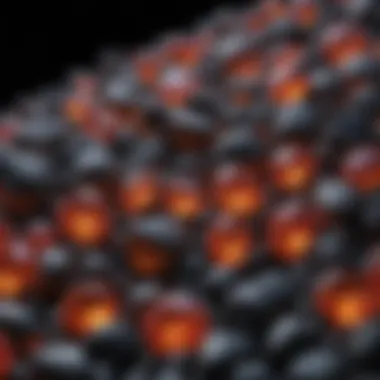
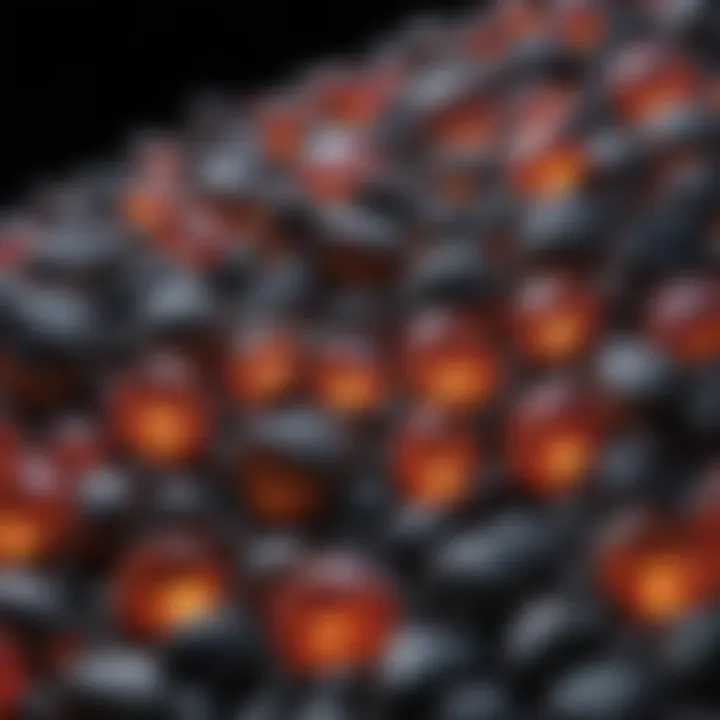
"Utilizing black light in geology transforms the way we see our planet's surface, revealing hidden stories from the past with clarity."
By integrating black light into standard geologic practices, professionals walk away with better insights and a richer appreciation for the complex tapestry of Earth's composition.
Collecting Rocks Under Black Light
Collecting rocks under black light adds a layer of excitement and intrigue to the hobby of rock hounding. Enthusiasts not only appreciate the aesthetic appeal of these natural treasures, but the use of black light also reveals unique characteristics that are otherwise hidden from plain sight. This section explores the best practices for rock collecting under black light, recommended equipment, and vital safety considerations, helping collectors maximize their experience while minimizing risks.
Best Practices for Rock Collecting
When venturing out for your rock-collecting excursions, keeping a few best practices in mind can elevate your findings. Here are some tips:
- Choose the Right Time and Place: Plan your excursions during times when natural lighting is minimal. Dusk or dawn can be optimal as they create less light interference, allowing black light to shine.
- Field Work: When exploring potential geological sites, scan the environment thoroughly. Remember, fluorescence can differ from mineral to mineral. Not all rocks will reveal their secrets under black light, so stay open-minded while collecting.
- Mark and Label: It’s solid practice to label your finds right there in the field. A sharpie can help mark the spot on a paper bag or container with details, such as the location and date of collection. This can be useful for future reference when researching specific minerals.
- Gentle Handling: Be careful when collecting and transporting specimens. Some rocks can be brittle or fragile and may lose their luminescent properties permanently if damaged.
Recommended Equipment
Gathering the right equipment can significantly enhance your rock-collecting experience under black light. Consider these essentials:
- UV Flashlight: A portable ultraviolet flashlight is a must-have. Aim for a longwave UV light, as this type is most effective for revealing fluorescence in minerals. Look for those that provide reliable illumination without overheating.
- Safety Glasses: Protecting your eyes is crucial. Attach a pair of UV-blocking sunglasses or safety goggles to shield your eyesight from harmful rays while observing glowing rocks under black light.
- Hand Tools: Basic tools such as a small hammer, chisel, and a digging trowel can help you unearth hidden rocks from their surroundings. A good pair of gloves can protect your hands while you work.
- Collection Containers: Use sturdy containers to store your specimens. Plastic or wooden boxes with cushioning can reduce damage during transport. Label each one properly to avoid mix-ups later.
Safety Considerations
Even the most thrilling hobbies must have safety at their core. Here are several precautions to consider while collecting rocks under black light:
- Sun Safety: Be mindful of sun exposure. Though your focus may be on black light, be cautious about UV radiation from the sun as well. Applying sunscreen to exposed skin and wearing protective clothing is advisable.
- Handling Toxic Minerals: Some rocks can be toxic or have adverse effects if handled improperly. Always research minerals before collecting. Make a mental note of common toxic minerals like sphalerite or arsenopyrite and exercise caution.
- Avoiding Hazardous Terrain: Collect in safe, accessible areas. Be cautious not to venture into dangerous terrains or over cliffs when searching for new specimens.
"Collecting under black light is not just about the glow; it’s about discovering a hidden world that reveals itself through just a little creativity and curiosity."
By adhering to these practices, equipping yourself properly, and observing safety measures, you can enrich your rock-collecting journey while fully harnessing the enchanting effects of black light.
Identifying Common Minerals and Their Reactions
The intersection of black light and various minerals presents a captivating realm that both enthusiasts and professionals find fascinating. This section delves into identifying common minerals and their reactions under black light, illuminating aspects that one might easily overlook in natural daylight. By understanding how different minerals respond to ultraviolet light, gem collectors, jewelry designers, and geology buffs can enrich their knowledge base while enjoying their pursuits.
Fluorescent Minerals
Fluorescent minerals are a cornerstone of mineralogy under black light. These specimens exhibit intense colors and brightness that often come alive when exposed to ultraviolet light. This fluorescence occurs due to various factors, including the mineral's composition, crystal structure, and trace amounts of other elements that may be present.
For example, calcite is a popular fluorescent mineral that can showcase a bright orange-red hue when illuminated with UV light. Similarly, willemite may glow in greens and yellows, creating a dazzling display that captures attention. Identifying these minerals not only enhances a collector's collection but also adds to the appreciation of how light interacts with matter. Those who seek to engage deeply with their collections benefit from understanding which minerals fluoresce, leading them to refine their collecting techniques.
- Common Fluorescent Minerals:
- Fluorite: Often reveals vibrant greens or purple under black light.
- Scheelite: Can glow in bright blue, making it a striking find.
- Baryte: Usually shows shades of blue when exposed.
"The beauty of fluorescent minerals lies in their ability to transform under light, revealing hidden qualities that enrich both aesthetic appreciation and scientific inquiry."
Other Types of Reactive Minerals
Beyond fluorescence, there are other types of reactive minerals, some may phosphoresce, while others may respond with a mere subtle change in appearance when subjected to black light. These reactions can range from glowing after exposure to displaying altered colors or patterns in response to ultraviolet light.
One notable example of reactive behavior is seen in the mineral aragonite. Unlike fluorescent minerals, aragonite has a unique property of phosphorescence where it continues to emit light for a short period after the black light is turned off. This phenomenon makes it a favorite among collectors who cherish its fleeting beauty.
Some minerals, like quartz, may not fluoresce but can take on a milky appearance due to their natural features. While their reactions may not be as vivid as fluorescent minerals, understanding how these otherwise unassuming rocks respond under black light can uncover layers of appreciation and knowledge for the collector.
- Examples of Reactive Minerals:
- Aragonite: Exhibits phosphorescence, glowing briefly after light exposure.
- Calcite: Besides fluorescence, calcite may change appearance under various light settings.
- Quartz: May not fluoresce, but brings other striking visual qualities into focus.
In summary, identifying and understanding common minerals and their reactions under black light allows enthusiasts to appreciate the rich tapestry of the mineral world. By focusing on both the vibrant, eye-catching hues of fluorescent minerals and the subtler reactions of other types, collectors can look beyond the surface and explore the deeper characteristics that each mineral holds.
The Influence of Ultraviolet Light on Gemstone Appearance
When one thinks about gemstones, the play of light and color often comes to mind. However, the impact of ultraviolet light on these precious materials can be transformative. Understanding how black light influences the appearance of gemstones is crucial not only for collectors but also for gemologists and jewelry designers. This exploration allows enthusiasts to appreciate the potential of their specimens beyond the daylight spectrum.
Color Changes in Certain Minerals
Many minerals respond uniquely when exposed to ultraviolet light. Take, for instance, calcite. Under black light, its fluorescence can turn a dull, ordinary stone into a vibrant spectacle.
Some minerals, such as willemite, glow with an intense green hue that can be startling against the darkness. This implies that certain specimens may look unremarkable in regular light but reveal a hidden vibrancy under UV rays. The color changes can vary significantly, ranging from subtle hues to bright, eye-popping tints.


- Fluorescence: Some minerals absorb UV light and re-emit it at different wavelengths.
- Phosphorescence: Others may store UV light and release it slowly, leading to an afterglow.
- Timezone Variance: The color may also differ across geographical locations, especially with minerals like opal. Local impurities or environmental conditions can modify how the gemstone reacts under black light, presenting a fascinating variable for collectors and geologists alike.
Impact on Gemstone Photography
Capturing the true essence of a gemstone through photography often requires more than just good lighting; ultraviolet light plays a substantial role in showcasing their beauty. The intricate color changes can enhance the gemstone's features, making photographs remarkably striking.
For jewelry designers and sellers, using black light in photography can lead to:
- True Representation: Observing how gemstones actually look with UV exposure helps in honest marketing.
- Highlighting Flaws: Any treatments or enhancements used on the gemstone can sometimes be revealed under UV light, giving a clearer picture of the stone’s integrity.
"Understanding the effects of UV light not only opens up a new realm of appreciation for gemstones but can also influence market value significantly when documented properly."
Lighting plays a pivotal role when trying to achieve the right photographic effects. Proper setup with specialized UV lamps can help capture the dynamic range in colors and glowing features that standard lighting might miss. The final photographs not only attract a prospective buyer’s eye but also tell a more comprehensive story about the gemstone’s origin and characteristics.
In summary, the influence of ultraviolet light on gemstones is multifaceted, impacting both their appearance and the ways they can be presented, making a strong case for its consideration in both collecting and marketing.
Caring for Rocks and Minerals Exposed to Black Light
Taking care of rocks and minerals that have been exposed to black light is crucial for maintaining their vibrancy and ensuring their longevity. This section will delve into the protective measures you can adopt and the best handling and storage tips that will help preserve the unique properties of these fascinating specimens.
Protective Measures
When dealing with minerals that fluoresce under black light, it’s essential to take some protective measures to prevent damage caused by prolonged exposure to UV light. Here are several recommendations:
- Limit Exposure: While these rocks look stunning under black light, excessive exposure can degrade their luminescent effects. Try to limit the duration they spend under the UV lamp, especially for more sensitive minerals.
- Use Filters: If possible, use filters on your black light source that limit the intensity of the UV rays. This can help protect minerals that are particularly sensitive to UV exposure.
- Keep Away from Direct Light: When not being displayed or examined, store your specimens in a dark environment to reduce the risk of fading and degradation.
- Control Temperature and Humidity: Temperature swings and high humidity can affect the integrity of the minerals. Store them in a controlled environment where fluctuations are minimal.
- Avoid Chemical Exposure: Do not use harsh cleaning solutions or expose them to chemicals that could alter their surfaces. A gentle dusting with a soft brush or cloth is usually sufficient.
"Taking these precautions makes a world of difference in preserving the stunning beauty of your mineral collection. Protecting your investment is as important as the collection itself."
Handling and Storage Tips
Proper handling and storage are as vital as protective measures. Here are some tips to keep your specimens in top shape:
- Use Soft Gloves: When handling your minerals, wear soft cotton or nitrile gloves. This prevents oils from your skin from getting on the surface, which can damage these sensitive specimens over time.
- Store in Soft Containers: Utilize padded boxes or soft pouches to store your rocks. This can help prevent scratches and abrasions that could occur if they were stored loosely or in hard cases.
- Label Clearly: Always label your storage containers with the names and essential details of the minerals inside. This not only aids in easy identification but also reduces the chances of handling them more than necessary.
- Arrange Carefully: Place minerals in a way that avoids putting pressure on them. A well-organized display allows for easy viewing and minimizes the risk of breakage.
- Maintain Regular Check-ups: Periodically inspect your collection for any signs of damage or degradation. Early identification of any issues can help you address them before they become significant problems.
By understanding how to care for rocks and minerals under black light, collectors can continue to enjoy their mesmerizing beauty while ensuring they remain in excellent condition for years to come. This attention to detail not only enhances the visual experience but also protects the investment made in these remarkable pieces of nature.
Future Trends in Black Light Applications within Gemology
The world of gemstones and minerals is undergoing a metamorphosis, with black light applications becoming increasingly pivotal in gemology. As we peel back the layers, it’s clear that understanding these trends is not just a passing fancy but an essential facet of modern gemstone analysis, offering fresh perspectives for collectors and professionals alike.
Technological Advances
In the realm of technology, advancements are reshaping how we perceive and evaluate gemstones under black light. High-resolution UV cameras are now at the forefront, enabling gemologists to capture detailed images of fluorescence patterns that were once challenging to discern. These images can spotlight intricate designs that tell a story about a stone’s origin and treatment history, granting experts the tools to authenticate and classify their specimens accurately.
- Miniaturization of Equipment: The shift towards portable UV lights allows collectors to conduct their analysis in diverse environments—from dusty gem shows to serene mineral expos. This mobility opens doors to spontaneous discoveries that enhance the hobby of rock collecting.
- Integration with Software: Photomicrographic techniques are increasingly being combined with digital analysis. Here, data can be processed and interpreted using arcane algorithms that reveal trends based on fluorescence intensity, which could lead to identifying potentially rare or sought-after specimens.
The implications are profound, creating a richer narrative surrounding each mineral’s journey through time.
Evolving Market Trends
As the market shifts, so do the preferences and practices of gemstone collectors and investors. There is a growing demand for transparency and education in the buying process, which results in an increased focus on professional grading methods using black light evaluation. This practice allows buyers to make informed decisions by discerning the quality and authenticity of stones more effectively than ever before.
- Sustainable Gem Practices: A trend emerging within this landscape includes a movement toward ethically sourced and sustainable gemstones. With black light analysis providing insights into the treatment of gems, buyers are now more inclined to understand the "how" behind their purchases. This knowledge catalyzes a shift towards sourcing stones that possess authenticity and integrity.
- Interest in Exotic Specimens: The allure of fluorescent minerals continues to captivate both novices and experts. Collectors are increasingly venturing beyond traditional gemstones, seeking out rare specimens that exhibit unique fluorescence under black light. This interest not only boosts the market for these stones but also fosters community discussions regarding their scientific and aesthetic significance.
"As the market evolves, the significance of thorough gemstone analysis only escalates. Knowledge is power, especially in a world where trends shift like quicksand."
Ending
As we wrap up our deep dive into the compelling connection between black light and rocks, it becomes clear why this topic holds significant value for miners, gem enthusiasts, and geology aficionados alike. Understanding how black light operates, particularly its roles in fluorescence and phosphorescence, can unlock a new level of appreciation for the mineral kingdom.
Summarizing Key Insights
Here are a few key takeaways to reflect upon:
- The Phenomenon of Fluorescence: Many minerals exhibit a captivating glow under black light. This feature is not merely a spectacle; it provides critical insights into the mineral's composition, enabling identification and assessment of quality.
- Practical Applications in Gemology: For jewelers and collectors, knowledge of rocks that fluoresce can aid in recognizing authenticity. It can also uncover treatments that may affect a gemstone's value.
- Collecting Practices: Engaging with this phenomenon necessitates some best practices — from the proper techniques for rock collecting to understanding the equipment that enhances the experience.
In essence, the allure of black light reveals layers of information about the earth's treasures that, without it, would remain hidden.
Encouraging Exploration
As we conclude, it is worth stressing the importance of exploration — not just of rocks but of the scientific principles underpinning the stunning visuals they can provide. By discovering and engaging with fluorescent minerals, enthusiasts can deepen their connection to nature's wonders.
- Consider attending local mineral shows to witness this experience firsthand.
- Experiment with black light at home; test different minerals and observe their responses. Who knows, you might unearth a new passion along the way!
- Join community forums, such as those on Reddit, to share your findings and learn from other enthusiasts.
The journey to fully understand how black light interacts with various mineral compositions can be as enlightening as the experience itself. So, whether you're a seasoned gemologist or a curious novice, the world of black light and rocks is ripe for discovery and exploration.







